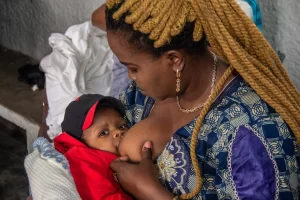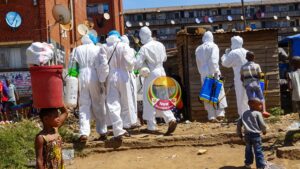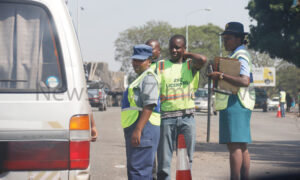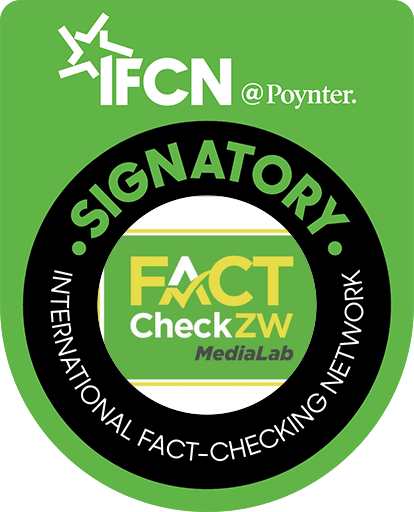CLAIM: Its (brazier) dangerous only with coal not charcoal.
SOURCE: Account on social media
VERDICT: False
Alright, picture this: it’s a very cold night. Maybe hitting the record lows that Zimbabwe experienced in 1980. Or a repeat of Bulawayo’s coldest night in 68 years experienced in June 2011, with a low of -1.5C. The answer? A little charcoal brazier (imbawula/mbaura) to ward off the chill. Perfect, right? But hold on a minute… what if that cozy charcoal fire keeps smoldering away while you drift off into a peaceful slumber? Is that a recipe for sweet dreams, or something a tad more… breathless?
Recently on X, an account posted a picture of a burning brazier with caption, ‘Nyangwe chando chibhure sei kana kuti zviite sei musarare makaisa ichi mumba ndapota! (No matter how cold it gets, don’t go to bed with this brazier indoors. I beg you).
The first response was a dismissive, ‘It’s dangerous only with coal, not charcoal, hachina kusiyana nechoto kana fireplace icho (like that its no different from a fireplace)’.
This raises a lot of questions such as what is the difference between charcoal and coal? Does one cause carbon monoxide and the other not? How about when you use logs for your fire? Is that safe? What is carbon monoxide? Where does it come from?
Definition of terms
Coal – this is a natural mineral that forms over the span of millions of years. Coal in its natural state is never used alone in a barbeque or smoker, it is commonly added to charcoal briquettes to increase the energy density.
Charcoal – Charcoal is carbon that is left after water and other volatile compounds are burnt off from wood (or any combustible biomass) in a low oxygen environment. This process known as pyrolysis is usually done in silos or specialised charcoal kiln and can take days to complete.
The lack of oxygen prevents the charcoal for combusting during this process which in turn prevents it from burning to ashes.
Firewood – all wood of any species, cut or not cut, split or not split, regardless of length which is destined for use as a fuel.
Carbon monoxide – colourless, odourless toxic flammable gas formed by incomplete combustion of carbon. Many household items including gas- and oil-burning furnaces, portable generators, and charcoal grills produce this poison gas.
Carbon monoxide Poisoning
Zimbabwe has in the past recorded deaths associated with carbon monoxide poisoning from braziers, here and here.
The Federal Institute for Risk Assessment (BfR) completed a research project in cooperation with the Federal Institute for Materials Research and Testing (BAM). This project investigated the concentrations of CO that are reached when charcoal grills or open fire are used indoors and how long it takes before this poses a hazard to humans. The result: even after a relatively short time, dangerous levels of carbon monoxide are reached.
Grilling in enclosed areas using charcoal is dangerous. The glowing charcoal releases considerable amounts of toxic gases, notably carbon monoxide (CO). Even when windows, doors and the garage door are opened for “safety reasons”, fatal CO concentrations can build up.
This risk is also present with devices which are advertised as special “indoor barbecues” despite the fact that they use glowing charcoal as their heat source. The same applies to charcoal-powered cooking pots, so-called “hot pots”, if they are used in the living room or in restaurants.
Contrary to the claim, charcoal, not just coal, can cause carbon monoxide poisoning. There are recorded cases of this. The U.S. Consumer Product Safety Commission has recorded cases of this, where in a seven year period, there were 83 deaths from carbon monoxide poisoning occurring as a result of people burning charcoal briquettes in an enclosed area.
Research shows that there are two hazards associated with leaving a wood fire burning – house fire and carbon monoxide poisoning. Firewood does produce carbon monoxide if it doesn’t burn completely. If ventilation is poor, carbon monoxide can then build up. A poorly made fire in an enclosed space can reach dangerous levels in three to five hours. In the Zimbabwean context, this can include a fire made of wet firewood in a poorly ventilated room. The best firewood to use to avoid the danger of carbon monoxide is that with less than 20 percent moisture.
The risk is thus not reduced by using charcoal instead of coal, or using firewood instead of charcoal. Risk reduction is in ventilation. A typical rural grass thatched hut is better ventilated than a zinc coated roof and brick room.
The South African Police also warms against the use of imbawula/mbaura. In a statement, it strongly advised citizens not to use coal-fuelled braziers indoors.
‘Instead, consider safer alternatives such as electric heaters or gas stoves that are designed for indoor use and come with built-in safety features. If you must use a brazier, ensure it is in a well-ventilated outdoor area, far from any flammable materials.
‘The convenience of using a coal-fuelled brazier indoors is far outweighed by the potential dangers it presents. Protect your health and safety by opting for safer heating and cooking methods, and always prioritize proper ventilation to prevent the build-up of harmful gases. Your life and the lives of your family depend on it.‘
Signs of carbon monoxide poisoning
– Headache.
– Dizziness.
– Weakness.
– Nausea and vomiting.
– Rapid heartbeat.
– Shortness of breath.
– Seizures.
– Chest pains.
– Disorientation.
– Loss of consciousness.
To treat carbon monoxide poisoning you need to get outside and breathe in fresh air.
Conclusion
The claim that braziers indoors are only dangerous when using coal is false. So, next time you’re tempted to bring that glowing imbawula/mbaura indoors on a chilly night, remember this: whether it’s coal, charcoal, or even that stubborn mopane log you wrestled into the brazier, carbon monoxide doesn’t discriminate. Keep it outside or ensure that your sleeping area has a source of fresh air and vents for stale air to go outside.











